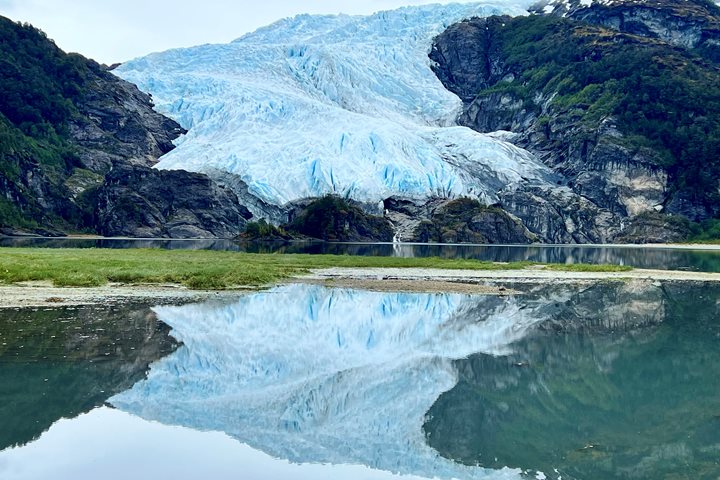This morning was spent entirely at sea, giving us a welcome chance to lie in and have a leisurely breakfast after a busy start to the trip. The weather was perfect with calm seas and bright skies and the scenery, as we are coming to expect, stunning. Our overnight route had taken us westward through the Aysén fjord and then southwestward towards a secluded fjord at the southern tip of the Taito peninsula within the boundaries of the Laguna San Rafael National Park.
These peaceful waters and pristine landscape provided the perfect backdrop for two meaty presentations, one from our Global Perspectives guest speaker, Tom Lovejoy entitled A Wild Solution for Climate Change and a second from local naturalist Tato Antezana on the adaptation of a particular species of krill to finely calibrated temperature variables within the Humboldt current off the coast of western Chile, two presentations that complemented each other and inspired our afternoon’s explorations. Our naturalists noted some 20 different species of seabird seen from the bridge or bow in the course of our morning transit.
After lunch, Zodiacs were launched for a beach landing at the head of an old service road to a lighthouse, some five kilometers distant, that was to be the object of a number of graded hikes at a location called Estero Slight. Our Zodiac operation was delayed, however, by the sudden appearance of a male sperm whale beside the ship at the very end of the fjord. A noted deep diver, we were not treated to the spectacular fluke displays associated with deep diving given the relatively shallow conditions of the fjord but nevertheless had excellent views of this splendid creature at the surface, with its distinctive dorsal ridge. Once the whale moved on we went ashore and the walkers spread out along the trail, enjoying the sights and sounds of the temperate rain forest—a rare survival of a stand of ancient woodland—in dry, often sunny conditions but with plenty of water underfoot to remind us of our continued good fortune on the weather front.
Birds often heard and sometimes seen included the huet-huet and the chucao, the latter a highly vocal bird that nevertheless conceals itself well in the thick foliage of the forest, and the only hummingbird species to be found here, the green-backed firecrown. A pair of black-faced ibis flew overhead and there were ashy-headed geese on the shoreline. Those who persisted to the further reaches of the trail were treated to magnificent views of the Pacific Ocean shoreline, with sandy strands and white-capped breakers rolling onto the rocky shore, and to a distant glimpse of the very useful lighthouse. As an alternative to the hikes, Zodiac cruises were offered, hugging the shoreline as the wind picked up, and giving great views of the forest, and of the gruesome remains of some beached whales.









